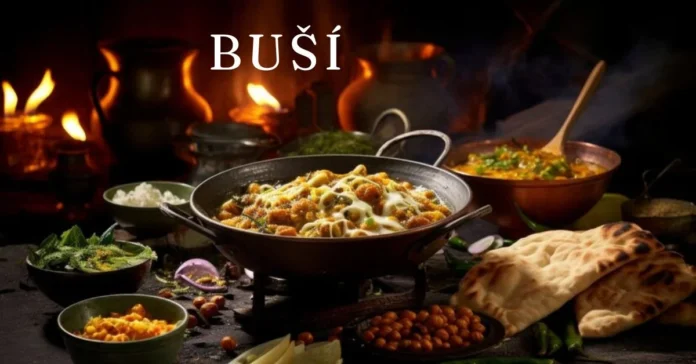Buší is more than just a dish; it represents centuries of tradition, community, and a way of life deeply ingrained in Eastern European culture. This humble yet rich culinary offering has evolved from simple peasant food to a beloved dish that continues to capture the hearts of food lovers across the globe. Let’s take a closer look at the journey of Buší, its significance, and how it remains relevant in modern cuisine.
The Origins of Buší:
Buší comes from Eastern Europe’s rural kitchens, created to withstand harsh winters and an agricultural lifestyle. It was made with basic, readily available ingredients like grains, vegetables, and sometimes meat. This practical dish was designed to nourish families through tough times. Over the years, Buší evolved into a cherished tradition, with recipes passed down through generations. Each family added its own touch while preserving the dish’s core simplicity and cultural value.
The Cultural Significance of Buší
Buší is much more than a meal; it represents the cultural identity of Eastern European regions. It is a key part of family gatherings, celebrations, and community events. Making and sharing Buší honors old traditions and helps people connect with their loved ones. It is a cherished way to keep cultural heritage alive and strengthen family bonds
The Evolution of Buší:
Buší, while rooted in tradition, has evolved to fit modern tastes. Today, chefs and home cooks experiment with new ingredients and techniques, putting their own spin on the classic dish while preserving its core essence. Modern adaptations include quicker cooking methods that cater to busy lifestyles, moving away from the traditional slow-cooking approach.
Regional Variations of Buší
Buší has evolved to include regional variations across Eastern Europe, reflecting local culinary traditions. Different regions add their own touch to the dish, using local ingredients and cooking methods. Some versions are seasoned with herbs and spices for added flavor, while others are served with side dishes like pickled vegetables or hearty breads. These variations highlight the diverse and rich nature of Eastern European cuisine.
Health Benefits of Buší
Buší is not only culturally significant but also healthy. It is packed with vegetables, whole grains, and lean proteins, making it a balanced meal. Some variations include herbs with health-boosting properties. The traditional slow-cooking method preserves the nutrients, ensuring Buší is both nutritious and delicious. Whether for daily meals or special occasions, Buší offers a tasty and wholesome option.
The Environmental Impact of Buší
1. Local Ingredients:
Buší often uses locally grown ingredients. This reduces the need for long-distance transportation, which cuts down on carbon emissions and supports local farmers.
2. Sustainable Farming:
The ingredients for Buší are typically grown using sustainable farming practices. This helps to protect the environment and maintain healthy soil.
3. Reduced Food Waste:
Buší recipes usually make use of a variety of ingredients, which helps reduce food waste. By using what’s readily available, the dish supports a more sustainable food system.
4. Eco-Friendly Choices:
Making Buší at home can be more eco-friendly than buying processed foods. It emphasizes fresh, whole ingredients, which are better for the environment.
Buší in Modern Cuisine:
As the world becomes more connected, Buší has gained global popularity for its simplicity, versatility, and rich flavor. It’s enjoyed at family dinners, festivals, and culinary events worldwide. Culinary tourism has also boosted its fame, with travelers seeking authentic Eastern European experiences often trying Buší. Cooking classes, market tours, and tastings offer a deep dive into the dish’s cultural and historical background, leading many to return home with a new appreciation for it.
The Future of Buší:
Looking ahead, Buší is poised to play an important role in the future of sustainable and innovative cooking. As more people seek out eco-friendly alternatives to mass-produced foods, dishes like Buší that prioritize local, seasonal ingredients will continue to gain popularity.
Innovations in food production and culinary techniques are also opening up new possibilities for Buší. From vertical farming to bioengineering, researchers are exploring ways to make Buší even more sustainable and accessible to a wider audience.
Conclusion:
Buší, a dish with deep roots in Eastern European culture, blends tradition with modernity. Its significance lies in its communal preparation, regional variations, and health benefits. As a symbol of sustainable cooking, Buší’s simplicity and versatility have made it a global culinary icon, ensuring that this traditional dish remains cherished and relevant for future generations.


